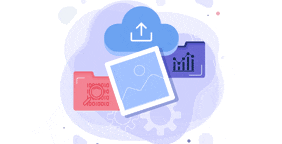
Big data is coming, you may want more fiber in your data center diet
By Max BurkhalterSeptember 6, 2013
The big data movement presents data center infrastructure challenges pretty much anywhere you may look within IT facilities. However, storage equipment upgrades, added power capacity and other upgrades will, in the end, mean nothing if you don't get the network in shape to support big data. The end result is a situation in which you may need to seriously consider strategic fiber deployment as part of your big data plans.
Big data and the network
Latency is central to network-related challenges associated with big data. A recent Data Center Knowledge report explained that the ability to track and use unstructured data is among the core functions of big data programs. With this capability, organizations can use social media information in real time to make strategic and operational decisions that are informed by conversations people are having about the company online. This kind of real-time data gathering and analysis depends heavily on low-latency network functionality that can get information between systems and users quickly.
Furthermore, applications can also use data in real time and, when equipped with automation solutions or given processes that the application completes without user input, can perform functions based on that data. The news source noted that flash-based storage architectures can help support this kind of functionality.
While flash is key to improving storage device performance, all the flash you can get your hands on won't pay off if network bottlenecks slow performance to such an extent that better storage performance becomes meaningless. Big data's impact on the network affects both north-south and east-west traffic in the data center, meaning that IT managers will need an efficient, flexible and high-performance network setup. Implementing fiber could be the answer.
Using fiber to support big data
An all-fiber data center is rarely an option. There are some supercomputing labs performing data-intensive research that uses big data concepts that are turning to all-fiber setups, but most businesses do not need this functionality any time soon. Instead, is usually makes more sense to create fiber backhaul systems and use fiber links in strategic parts of the data center to eliminate bottlenecks.
Fiber to Ethernet media converters are integral in making this happen because they enable organizations to switch seamlessly between copper and fiber as necessary. The end result is a network architecture that flexibly meets performance needs while keeping costs under control and enabling future flexibility.
Perle has an extensive range of Managed and Unmanaged Fiber Media Converters to extended copper-based Ethernet equipment over a fiber optic link, multimode to multimode and multimode to single mode fiber up to 160km.



